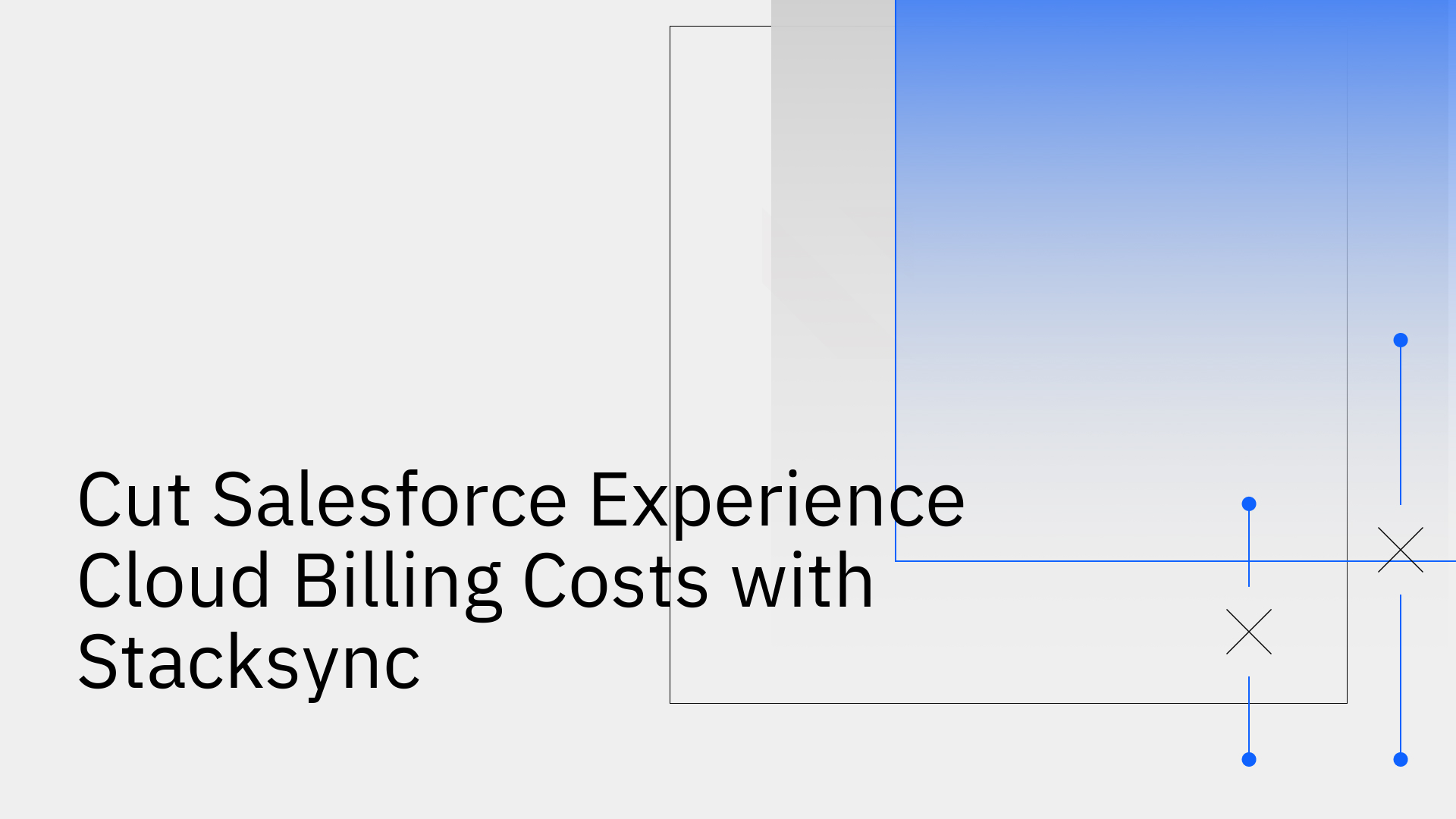
Salesforce Experience Cloud is a powerful platform for building customer and partner portals, but its user-based licensing model can quickly lead to escalating costs. Many businesses find themselves paying for thousands of licenses for users who might only log in a few times a year, putting a significant strain on the budget.
The good news is there's a smarter way to operate. By using a data synchronization platform like Stacksync, you can offload user access to a more cost-effective custom application while maintaining Salesforce as your central source of truth, drastically reducing license fees.
Salesforce Experience Cloud pricing is primarily driven by a per-user model, which comes in two main flavors: per-member or per-login [3]. Understanding these structures is key to seeing where costs accumulate.
The costs vary significantly across different license types, such as Customer Community, Customer Community Plus, and Partner Community, each offering different levels of access and functionality [6]. As your user base grows, these fees multiply quickly. Beyond the licenses themselves, hidden costs can also surface, including charges for exceeding API limits and the high cost of hiring specialized Salesforce developers to manage and customize the platform.
Stacksync is a real-time, two-way data synchronization and workflow automation platform that seamlessly connects Salesforce with external databases and applications. The core strategy to reduce costs is simple: instead of giving every external user an expensive Experience Cloud license, you use Stacksync to replicate the necessary Salesforce data to an affordable and scalable database, like PostgreSQL or MySQL.
This approach allows you to move your user-facing portal outside of the Salesforce ecosystem while keeping your data integrity intact. Here’s how it works:
By externalizing the user interface, you move your users off the costly Salesforce license model without ever sacrificing data accuracy or consistency.
The magic behind this strategy is Stacksync's powerful bidirectional sync capability. When a user updates information in your custom portal—for example, changing their contact details or updating an order status—that change is instantly and automatically written back to the corresponding record in Salesforce.
This ensures that Salesforce always remains the ultimate system of record. Your internal teams, from sales to support, can continue to work within Salesforce with full confidence that they are seeing the most up-to-date information. Stacksync is purpose-built for Salesforce, with features like real-time speed, automated triggers for workflows, and robust issue management to ensure your data flows are reliable and uninterrupted.
Let's look at a tangible example to see the dramatic savings. Imagine a manufacturing company with 5,000 partners who need portal access to view product data and order histories.
The key difference is the pricing model. Salesforce charges per user, while Stacksync's pricing is based on the number of records you sync, not the number of users who access them. This makes it a far more scalable and economical solution for large communities. You can explore our scalable pricing model to see how it fits your needs.
Getting started is more straightforward than you might think. Here’s a clear, actionable guide:
Ready to see how this could work for your business? Book a demo or start a free trial to explore how Stacksync can solve your specific use case.
Stop overpaying for Salesforce Experience Cloud licenses for large or infrequently active user bases. Stacksync offers a strategic and proven path to significant cost reduction by decoupling the user interface from the Salesforce platform while maintaining perfect, real-time data integrity.
By adopting this approach, you unlock a massive ROI, gain predictable scaling for your user communities, and achieve greater architectural flexibility. You are no longer locked into a single vendor's ecosystem for your user-facing applications. To learn more about the value and pricing models, check out our Stacksync Business Guide.